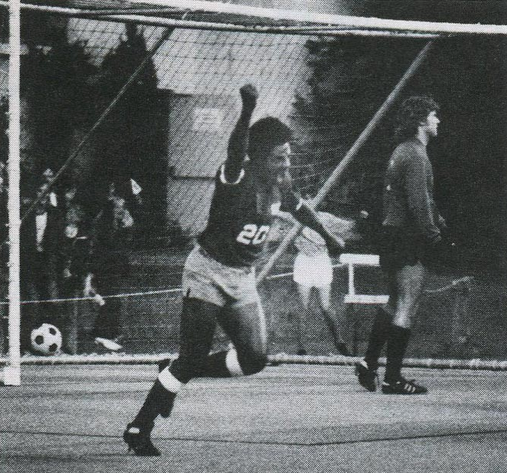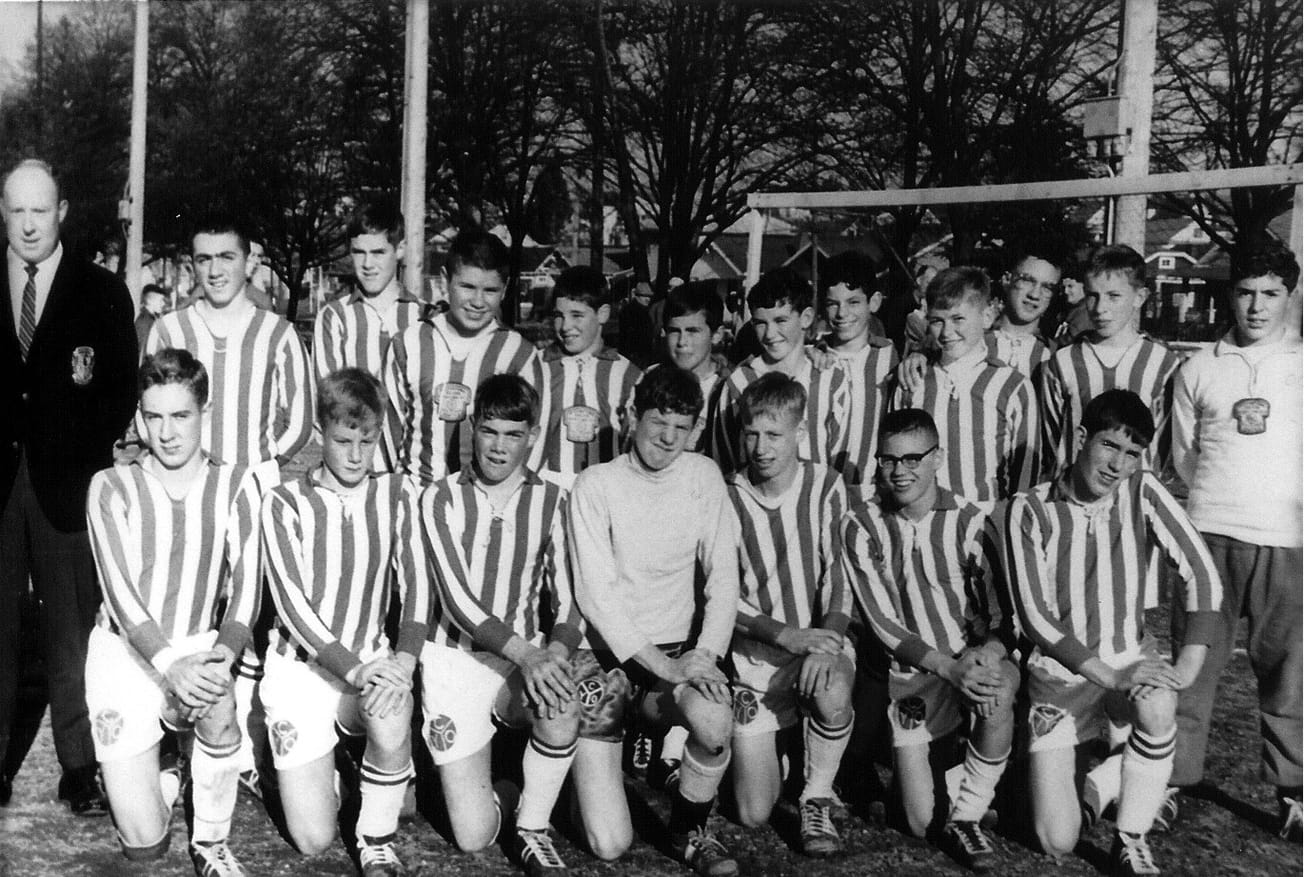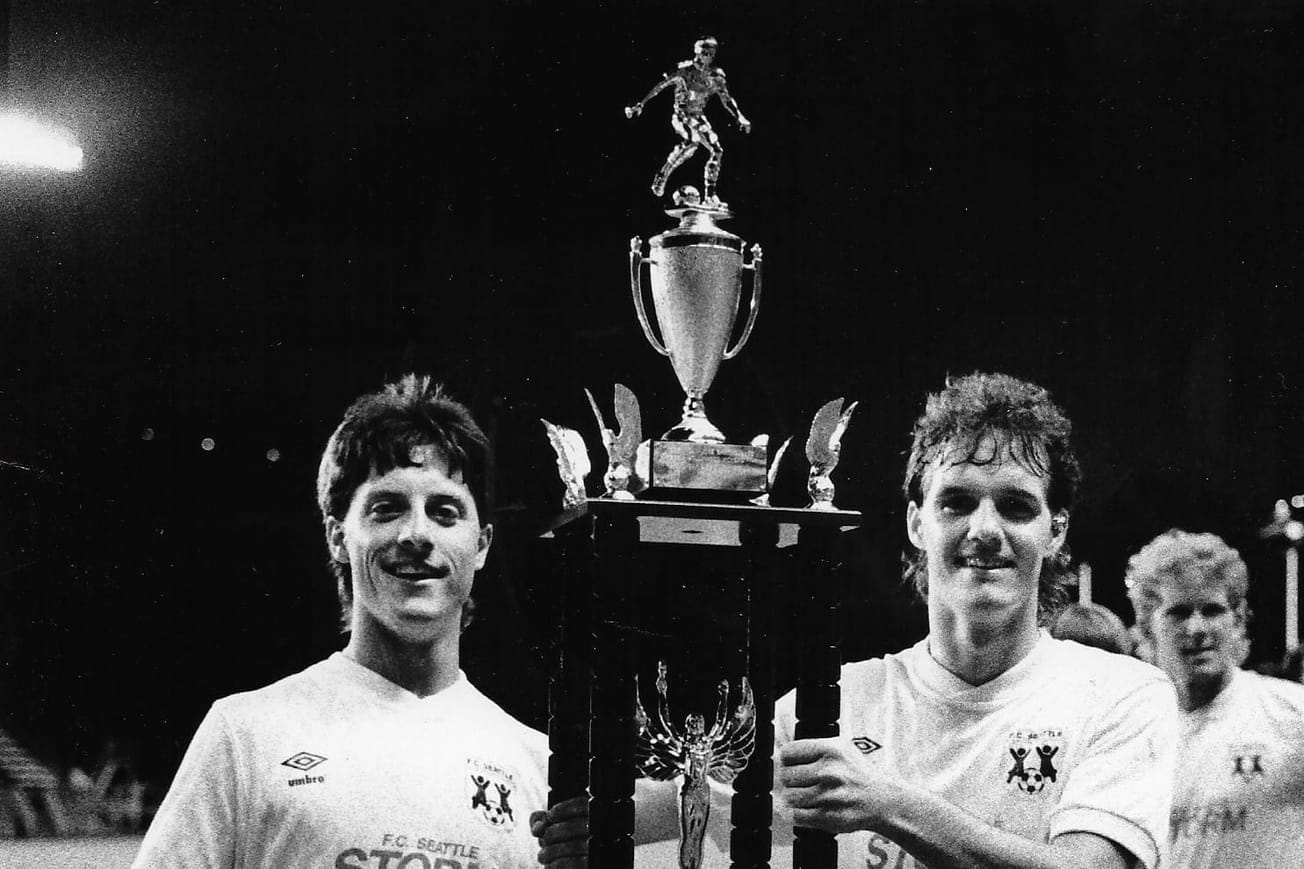All Otey Cannon did was blaze a path, fulfill his role in a legendary squad and make American footy history.
Now, approaching the 50th anniversary of his rather grand entrance into Seattle Sounders lore, Cannon returned to Seattle, joining other members of the 1974 NASL team to become charter inductees to the Eternal Sounders Circle of Legends.
Few could rival Cannon’s ability to instantly make an impact. He was signed off waivers on June 28, 1974, and made his debut in the next game, eight days later. One particular fan took note of his warming up and was quite vocal. In the 73rd minute of a nil-nil stalemate with St. Louis, he came off the bench.
“This guy in the stands was screaming my name,” and not in a good way, according to Cannon. “John (Best, head coach) told me to ignore it, to just go out there and play. Then the ball came to me, I hit it – and it went in.”
The resulting roar of the 14,000 at Memorial Stadium effectively silenced that singular loudmouth. Cannon remembers going to his knees in celebration, thinking “Damn, about time!” Beyond that, he doesn’t remember too many specifics. “I was probably just overwhelmed.”
Four minutes into his first Sounders shift, Cannon had scored what proved to be the deciding goal. After losing three straight following star Pepe Fernandez’s season-ending injury, Seattle’s expansion side won its fourth straight and was back in NASL playoff contention. Reminiscent in recent times would be Paul Rothrock’s 2023 winner at Houston – an 83’ entry and 87’ winner – in his MLS debut.
For Cannon, it was a relief; he had not scored in a competitive match since his senior season at Chico State, 31 months earlier. In fact, the player once known as ‘Boom Boom’ put six goals past Seattle Pacific in an NCAA tournament game. He would score in bunches, totaling a record 42 goals in two seasons.
That scoring prowess and raw, sprinter speed prompted the Dallas Tornado to take Cannon in the NASL college draft, and all at once he became an unwitting trailblazer. He arrived in Dallas and was told he was the first American-born Black to be drafted in the NASL. When he came off the bench in the Tornado’s season-opener, he made history again, becoming the first Black American to play in a major U.S. league.
“(Tornado owner and, later, FC Dallas founder) Lamar Hunt was trying to promote the game,” recalled Cannon, “and for me to be on the squad as not only an American but a Black American, it was like a feather in their cap because I didn’t know I was the first Black to play in the league.”
Ahead of His Time
To that point, the 21-year-old Cannon had not thought about the color of his skin, at least with respect to soccer. “My old college roommate said, it was a sport that no blacks played, and you’re basically ahead of your time. He said I was the Jackie Robinson of soccer. I laughed, because being from San Francisco, we didn’t look at it like that. We just played.”
Cannon, one of 10 siblings, would travel with the Tornado throughout Europe, playing exhibitions. There, he was a teammate of Best, the Dallas captain, assistant coach and influential in all off-field initiatives.
Whereas spectators in France, Germany and England “accepted you as a soccer player,” such was not always the case in parts of the U.S. “East of the Mississippi, it was just a different vibe, where you would hear comments,” that Cannon chooses not to repeat. “We didn’t understand racism. Once we got away from the West Coast, that’s where we started seeing and hearing things. My wife had never seen (separate) black and white drinking fountains until we got to Dallas. This was 1972.” He says it was a time when America “was evolving.”
After two-plus seasons in Dallas, he was released. However, before Cannon could return to California, on the recommendation of Best, the Sounders called.
“Otey was as fast as lightning,” remembers David Gillett, a defensive stalwart for the Sounders their first four seasons. “He had a big, tall hairdo and was such a pleasant, nice guy.”
David Butler, who started ahead of Cannon, scoring 10 goals, does not remember the crowd insults directed toward Cannon, but he had witnessed “terrible racist remarks and actions” at his hometown club in England, West Bromwich Albion, during the Seventies.
Significance Overlooked
Without Fernandez, a Uruguayan forward, Cannon was the only other black player that first year. “There was quite a difference between an American player and an African or Caribbean player,” he said “To find a Black American was kind of a shock to them, the coaches and spectators. There were barriers that you had to knock down.”
When Cannon did make history in Seattle, becoming the first Black American to score in the league, there was scant mention of its greater significance. Rather, out came the reporters’ puns, of the goal being “shot by a Cannon.”
He would appear in each of the remaining games, starting four. He did not score again. Early in 1975, Cannon was released, just after learning he and wife Brenda would be starting their family. Daughter Nicole was born in Seattle and has returned to live here. Otey and Brenda visit regularly.
Creating A Culture
Although the Sounders would fall just short in their playoff bid, they went 13-7 and finished with the league’s fifth-best point total. They were a close-knit group, with all of them residing in the same apartment complex, often sharing cars. Pay was nominal. He noted: “We really didn’t have any real superstars, we had players. We were all able to mesh. The English players, the Dutch and European players, we all got along. There was never any animosity or anger because of race, creed or color.”
While in Dallas, the club might send Cannon and his teammates to shopping malls to juggle a ball and attract attention from passersby. “In Seattle, we would actually go to people’s homes, have dinner. We would go meet a whole community at a community center, sit down and talk and have a barbecue.”
“After the end of the game, the whole team, we’d go to midfield, and we’d bow to each section of the stadium,” said Cannon. “The fans would come on the field and would mingle with them. That was the good, warm community feeling that we had up there. It didn’t happen in other places like that. But Seattle was a city that embraced the team.”
After Seattle, Cannon caught on with the Sacramento’s American Soccer League team, leading the Spirit for two seasons. While he pursued his dream, Brenda’s job with Pacific Bell, said Otey, kept them financially afloat. After he stopped playing, he joined the California Highway Patrol, serving for 30 years.
Only Gratitude
Cannon harbors no bitterness, only gratefulness for his opportunity to pursue a dream and see much of the country and the world while doing so. He just wanted to play, and the history-making was a bonus. He is an inductee to several other halls of fame in the Bay Area, and his feats of ‘firsts’ are now more widely known.
He and the ’74 Sounders are now recognized for creating a chemistry with fans, with winning games within a team framework and setting a high standard. Those are traits which have now been intertwined with Sounders soccer for five decades. They will not be forgotten by anyone who bore witness.
“Seattle had never seen anything like that,” said Cannon. “We loved doing these things with the fans. We didn’t need a reward, we loved doing it because the people treated us so good. Everybody was made to feel like they were at home.”
This story originally appeared on Frank MacDonald's blog, frankmacdonald.net.








